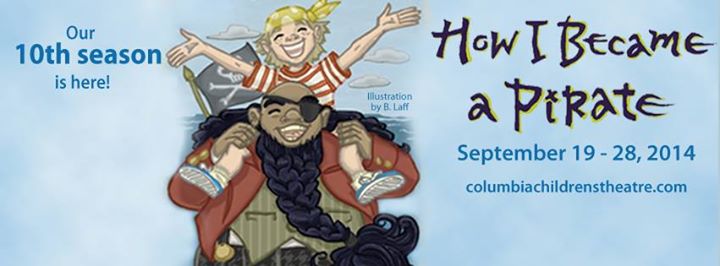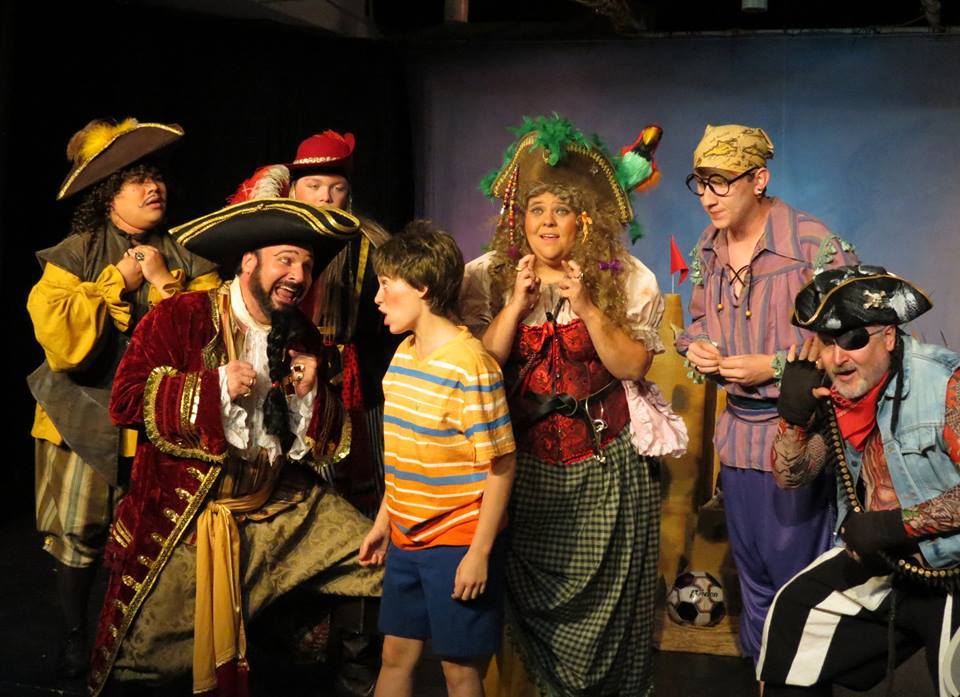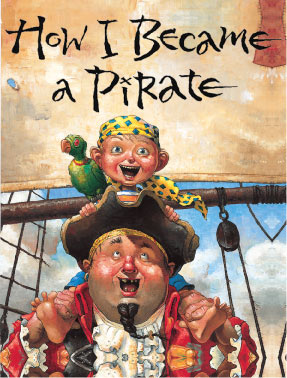It all started with Yvonne De Carlo. Yes the actress, Yvonne De Carlo. I happened to pick up a book entitled Broadway Musicals: The 101 Greatest Shows of All Time one afternoon in the spring of 2009 during my final semester of grad school in the USC Russell House Bookstore. I opened it up, looked through a few pages, and knew I had to have this book in my personal library. That evening, I began to flip through and read about all of the various shows that the authors had designated as “The Greatest.” When I got to the “F’s,” I noticed a rather long article about a musical simply entitled Follies. As I read, what caught my eye immediately was that the Stephen Sondheim musical had starred Yvonne De Carlo.
De Carlo was an actress that I had been a fan of for as long as I could remember, beginning in elementary school, when I would watch reruns of The Munsters on Nick At Nite. As I went through middle and high school, I became what one might call a “film buff,” and began to watch every classic movie that I could get my hands on. I began to notice De Carlo in such films as The Ten Commandments and McLintock! Remembering my fondness for The Munsters, I always watched any and every film I came across with her name in the credits. Not only was De Carlo beautiful, talented, and a joy to watch perform; she had something so engaging about her, a quality that surely had a lot to do with her stardom. It always baffled me that such a beautiful and classy lady took on a role as a Bride of Frankenstein-esque horror film housewife, but I was extremely grateful that she did. Her approach to the role of Lily Munster was by all means brilliant. I noticed De Carlo’s name and photo in Broadway Musicals, and began to read the article on Follies more in depth.

Follies, as I found, was designated by many critics, as perhaps THE greatest Broadway musical ever produced, despite the fact that it was a financial failure when originally staged in 1971. It had a very loose script, and primarily focused on a group of former chorus girls and boys attending a reunion at the fictional Weismann Theatre, the night before its demolition. I began to read about all of the classic show-stopping moments in the original production, including De Carlo’s marvelous rendition of the now classic Sondheim tune, “I’m Still Here.” I had to hear one of my favorite actresses belt this number, which I read was written specially for her about her life. Within 10 minutes, I had downloaded the Original Cast recording off ITunes and in less than 24 hours was hooked on Follies. I began to research the show obsessively. My research was aided in part by the definitive tell-all book on the original production entitled Everything Was Possible: The Birth of the Musical Follies, by Ted Chapin, who worked as the Production Assistant.
The first thing about the 1971 production that I noticed had made it so great was the casting. Everyone among the cast of actors had in one way or another lived the life of the characters that he or she portrayed. De Carlo, for example, was a former chorus girl that transitioned into movie stardom and now appears on a campy television series, just like her alter ego Carlotta Campion. Alexis Smith had started out as a ballet-dancing chorine, who went onto a successful career in films that showcased her dramatic and sophisticated capabilities. This career was not a far cry from the cool Phyllis, her stage counterpart, a chorine turned society woman. Dorothy Collins, also formerly a chorine and now a warm, witty, and talented television personality, singer, and devoted mother, embodied perfectly Sally, the “everywoman housewife,” with an emotionally crippling vulnerability lurking beneath the surface. Gene Nelson was a former tap dancing acrobatic movie star, best known for his portrayal as Will Parker in the film adaptation of Oklahoma. Now retired from acting and dancing and primarily a director and family man, he too mirrors his character Buddy all too closely. I could go on forever about how each original cast member WAS in fact his or her character, but to save time, I will quickly mention a few noteworthy personalities. Fifi D’Orsay, former French Canadian chanteuse and comedienne, portrayed Solange, also a chanteuse and comedienne. Ethel Shutta, a huge Broadway musical star from the 1920’s, played Hattie, who had the same history. Ethel Barrymore Colt, the daughter of Ethel Barrymore, portrayed Christine, a former chorus girl. While Colt spent the majority of her career appearing in straight plays and singing soprano arias in supper clubs, she started out as a chorine in The George White Scandals. Finally, Helon Blount, now a seasoned character actress, portrayed Dee Dee, another former chorus girl. Before drifting into character work, Blount had been a dancer and Off-Broadway musical star for a number of years.
I soon began thinking about the perfect actors in Columbia to portray this plethora of interesting characters. I wanted to direct a production of Follies with the same intricate casting as the original production. A number of names popped into my head, and while I soon had the entire show cast in my mind, I set my plans aside for a few years. The time didn’t seem right, and I was not sure of an available venue to direct such a show. And I didn't feel confident in my directorial skills yet. It was not until I went back to school to study Theatre, finishing in 2011, that I felt ready. I directed a production of Tennessee Williams’ Suddenly Last Summer at USC’s Benson Theatre. I also directed an original Bob Fosse revue that I entitled Damn Sweet Pajama Cabaret, while working professionally at The Lost Colony in the Outer Banks. Upon returning to Columbia in the fall of 2011, I again became super-involved in local theatre. While performing in numerous productions, Follies always remained in the back of my mind. With each show I worked on came one or two more perfect candidates for my dream production. Finally, in 2013, I spoke with a friend, local actor and director Frank Thompson, about the many fundraisers that he organized to benefit Town Theatre, all of which contained his original ideas. He then encouraged me to approach Sandra Willis, Executive Director of Town, with my vision of Follies as a fundraiser that could benefit the theatre. Fortunately, Mrs. Willis loved my idea, and we made plans for the production to occur in the summer of 2014. Obviously mounting the entire show was too big an undertaking for a fundraiser. However, a concert version of the major hits from the show would be perfect for August, a month between Town’s summer show and its next season opener.
It was now time to choose what numbers from Sondheim’s score I wanted in my concert, and which actors to invite. Being faithful to James Goldman’s original Libretto for the show, I wanted to use all original 38 characters, because I knew that there was enough talent to fill these parts in the Columbia area, and then some. 19 of these characters are the reunion attendees that I spoke of earlier, former chorus girls and boys that sang and danced enthusiastically in their youth, but were now retired for the most part. The other half are the ghostly “young” counterparts of these characters. Part of the brilliance of Follies is the fact that while the former Weismann performers are attending this reunion, the ghosts of their youth wander throughout the action, sometimes performing, sometimes not, but always serving as a constant reminder, a memento mori if you will, of the natural human occurrence of aging and decay. These youths physically embody the major metaphor of the show: “all things beautiful must die,” a line from “One More Kiss.” The innocent rapture of our youth gradually gives way to the harsh and abrasive reality of adult life. Marriages careers, families, etc are never what we envisioned them to be. Using this brilliant dichotomy, Goldman and Sondheim fashion a show that reflects upon the decay of our society as a whole, particularly in post-World War America.

When casting the “reunion attendees,” I needed 19 local actors of a certain age that had been doing theatre for a number of years and seemed to embody their characters as well as the original Broadway cast members did. The first part I cast was easy, Ruth Ann Ingham as Sally Durant Plummer. Ruth Ann has been my music teacher, vocal coach, and friend for going on twenty years now. I could not wait to hear her beautiful operatic voice tackle the classic Sondheim ballad, “Losing Mind.” Then I asked Andy Nyland, an expressive and talented singer and actor with whom I had appeared in 6 productions to play Sally’s husband Buddy. Andy has the perfect voice for the part and agreed to join the project. Next, it was extremely simple to cast Kathy Hartzog as Carlotta. Kathy has been entertaining audiences in Columbia theatres for many years with her impeccable comedic timing and warm personality. “I’m Still Here,” would be a piece of cake for her. The rest of the soloist casting began to happen even more quickly: Nancy Ann Smith to sing “Broadway Baby,” as the wry and witty Hattie; Jami Steele to portray the fabulous Solange and sing “Ah Paris;” Frank Thompson and Shannon Willis Scruggs to portray the fun and adorable vaudevillian couple, Emily and Theodore Whitman, and sing “The Rain on the Roof;” and Will Moreau to play the humorous former director Dmitri Weismann. All of these actors are staples at Town Theatre, and the audience will recognize each of them from the numerous memorable roles that they have created over the last twenty years.
I then enlisted Christy Shealy Mills to portray Stella Deems, a former tap soloist and ensemble leader in the former Weismann showstopper, “Who’s That Woman,” which Stella and her friends recreate at the reunion. Stella is backed up by 6 former chorine tappers in the number, including Sally, Carlotta, and the yet to be cast Phyllis. The other female characters in the number are: Meredith, the youngest former Weismann Girl; Christine, the former leader of the parade of beautiful girls in the follies opening numbers; and Dee Dee, a serious and confidant former chorine. I easily found 3 women that could tap dance and bring to life these ladies: Becky Lucas Combs, who I had grown up with, to play Meredith; my cousin and frequent costar Agnes Babb as Christine; and my friend and co-performer Robin Blume as Dee Dee.

I still had a few more roles to cast. I also decided to expand upon the role of Sandra, who in the original production was a swing understudy, portrayed by the retired Russian ballerina and pin-up girl Sonja Levkova. I cast a highly talented actress that I had worked with in Elvis Has Left the Building and Les Mis, Resi Talbot, who was relatively new to Columbia theatre, in this role. I also chose a song that was cut from the original production for Resi to perform: the hilariously smart “Can That Boy Foxtrot.” “Foxtrot” was intended as Yvonne De Carlo’s big moment, but when the actress couldn’t make the largely euphemistic lyrics work, it was cut and replaced with “I’m Still Here.” The song has become a cult classic over the years, and was included in the Sondheim Revue, Side by Side by Sondheim. Knowing Resi had the comic timing necessary, I gladly offered her the chance to sing it, and she took me up on my offer.

I also needed to cast the role of Heidi Schiller; an 80-year-old retired opera singer, and the oldest attendee at the Weismann Reunion. I approached Mrs. Carmella Tronco Martin, the retired owner of Villa Tronco (also my place of employment.) Mrs. Martin is the daughter of the late Sadie Tronco, who founded the restaurant in 1940. In her 80s, Mrs. Martin is just as sharp and witty as ever, and at first nervously dismissed my offer, stating, “I can’t sing.” What Mrs. Martin didn’t know was that I had heard her sing karaoke at an event I helped the restaurant cater a few years back, and knew that she possesses a lovely voice. When I informed her that she would share the stage with the “ghost” of her younger self, she seemed more confident, and agreed to make her stage debut at the age of 89 (!!) in Follies. I was delighted, because it is a rare in a production of the show, including even the 1971 production, to have an actress actually in her 80’s play the part.
Coming up in Part 2: more casting challenges!
Selections from Stephen Sondheim's "Follies" in Concert goes up on Friday, August 15, at 8:00 PM at Town Theatre. Tickets are $10/General Admission, and are available by phone (799-2510) or at the door.
Selections from Stephen Sondheim’s Follies in Concert
Friday, August 15, 2014 at 8:00 PM
Directed by Charlie Goodrich
Musical Direction by Jeremy Buzzard
All Choreography (after Michael Bennett) by Charlie Goodrich
Except: Bolero D’ Amour Choreography by Tracy Steele
Costumes by Christy Shealy Mills
Scenic/Tech Design by Danny Harrington
Lights by Amanda Hines
Sound Design by Robert Brickner
Stage Manager: Jill Brantley
Assistant Stage Manager: Russell Castell
Dance Captain: Allison Allgood
Pianist: Susie Gibbons
Photography by Rebecca Seezen, Britt Jerome, and Charlie Goodrich
 Chapin Theatre Company presents an outstanding production of Into the Woods with music and lyrics by Stephen Sondheim and book by James Lapine at the Harbison Theatre at Midlands Technical College. The musical debuted in 1986 at the Old Globe Theatre in San Diego, followed by a Tony Award-winning Broadway production in 1987. Numerous other versions of Into the Woods have emerged over the years, including Broadway and London revivals as well as the 2014 film adaptation. (This reviewer first fell in love with the musical through the PBS American Playhouse filming of the original stage production. Into the Woods became the first of many musicals I would direct with high school students, and I have fond memories of problem-solving its trickier production demands with energized and optimistic teenagers.) The Chapin Theatre Company succeeds in producing a musical with considerable history through an innovative and fresh approach.
Chapin Theatre Company presents an outstanding production of Into the Woods with music and lyrics by Stephen Sondheim and book by James Lapine at the Harbison Theatre at Midlands Technical College. The musical debuted in 1986 at the Old Globe Theatre in San Diego, followed by a Tony Award-winning Broadway production in 1987. Numerous other versions of Into the Woods have emerged over the years, including Broadway and London revivals as well as the 2014 film adaptation. (This reviewer first fell in love with the musical through the PBS American Playhouse filming of the original stage production. Into the Woods became the first of many musicals I would direct with high school students, and I have fond memories of problem-solving its trickier production demands with energized and optimistic teenagers.) The Chapin Theatre Company succeeds in producing a musical with considerable history through an innovative and fresh approach.













